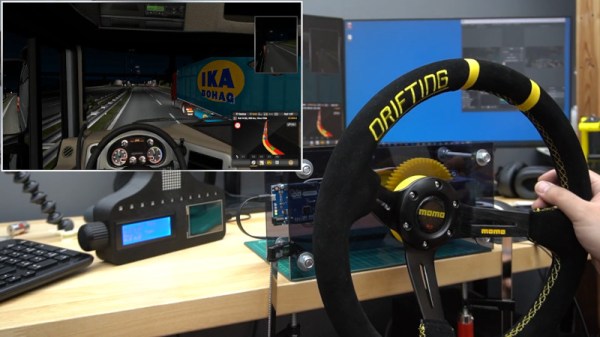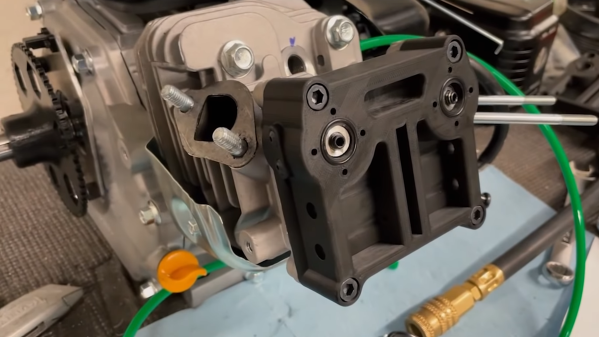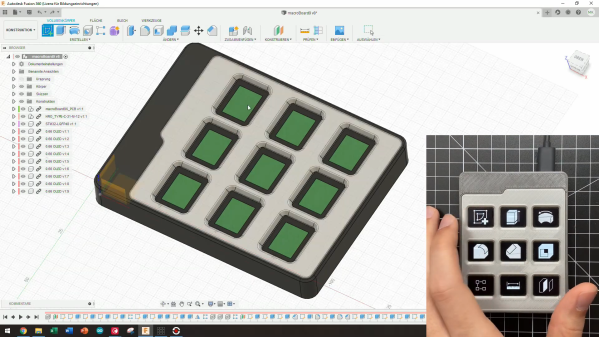There are many racing wheels on the market for the budding sim enthusiast. Unfortunately, lower end models tend to have a limited range of motion and ship with cheap plastic wheels that don’t feel good in the hand. As always, if what’s on the shelf doesn’t meet your needs, you can always build your own. [ilge]’s DIY racing wheel build is a great example of how to go about it.
It’s a no-frills build, with an Arduino Leonardo doing the USB Human Interface Device duties in this case. It reads a standard 10K potentiometer via an analog input to determine wheel position. To enable a realistic 900 degrees of motion, unlike the standard 270 degree rotation of the potentiometer, [ilge] uses 3D printed gears of 15 and 54 degrees respectively. This also has the benefit of allowing the wheel to be mounted to a stout bearing for smooth motion. The steering wheel itself is a high quality drift wheel from MOMO, and the benefit of building your own setup is that you can choose whatever wheel you like to taste.
It’s a simple build both mechanically and electronically speaking, but one that serves as a great entry into building a DIY sim for the beginner. We’d love to see further upgrades towards force feedback, or even shift paddles added on the back. Those looking to go all out can even consider building a motion platform. Video after the break.
Continue reading “900-Degree Racing Wheel Helps You Nail The Apex”

















